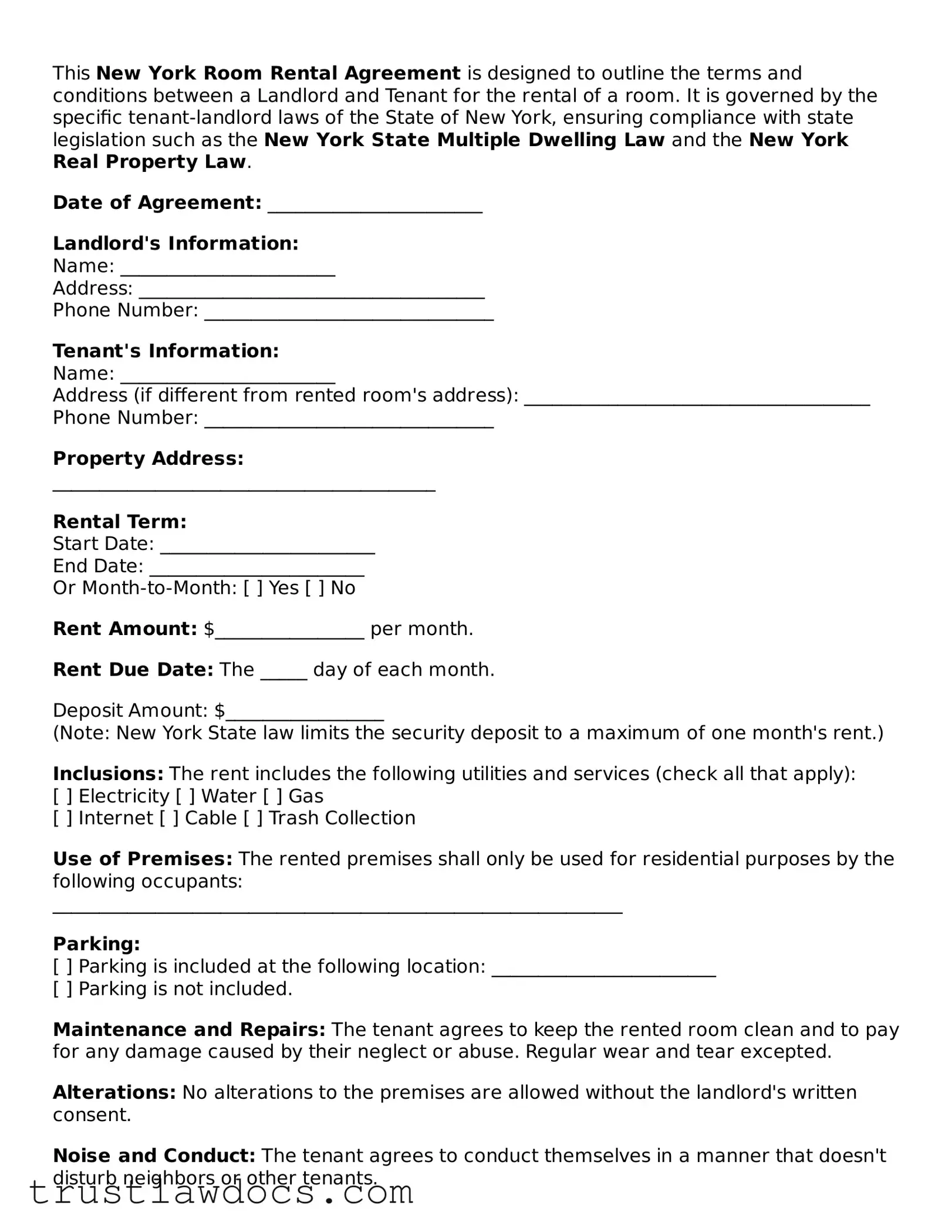This New York Room Rental Agreement is designed to outline the terms and conditions between a Landlord and Tenant for the rental of a room. It is governed by the specific tenant-landlord laws of the State of New York, ensuring compliance with state legislation such as the New York State Multiple Dwelling Law and the New York Real Property Law.
Date of Agreement: _______________________
Landlord's Information:
Name: _______________________
Address: _____________________________________
Phone Number: _______________________________
Tenant's Information:
Name: _______________________
Address (if different from rented room's address): _____________________________________
Phone Number: _______________________________
Property Address:
_________________________________________
Rental Term:
Start Date: _______________________
End Date: _______________________
Or Month-to-Month: [ ] Yes [ ] No
Rent Amount: $________________ per month.
Rent Due Date: The _____ day of each month.
Deposit Amount: $_________________
(Note: New York State law limits the security deposit to a maximum of one month's rent.)
Inclusions: The rent includes the following utilities and services (check all that apply):
[ ] Electricity [ ] Water [ ] Gas
[ ] Internet [ ] Cable [ ] Trash Collection
Use of Premises: The rented premises shall only be used for residential purposes by the following occupants:
_____________________________________________________________
Parking:
[ ] Parking is included at the following location: ________________________
[ ] Parking is not included.
Maintenance and Repairs: The tenant agrees to keep the rented room clean and to pay for any damage caused by their neglect or abuse. Regular wear and tear excepted.
Alterations: No alterations to the premises are allowed without the landlord's written consent.
Noise and Conduct: The tenant agrees to conduct themselves in a manner that doesn't disturb neighbors or other tenants.
Rental Increase: For month-to-month agreements, the landlord may increase the rent by providing at least thirty (30) days' written notice to the tenant.
Termination: This agreement can be terminated by either party by providing thirty (30) days' written notice to the other party.
Governing Law: This agreement shall be governed by and construed in accordance with the laws of the State of New York.
Landlord Signature: _________________________ Date: ____________
Tenant Signature: _________________________ Date: ____________
Please review this agreement carefully. By signing, both parties agree to the terms and conditions outlined above.
